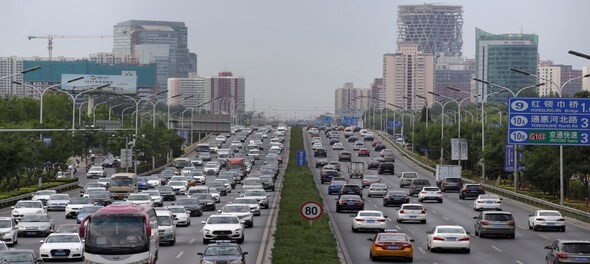
Fresh out of the COVID-19 crisis, the engines of China's automotive factories are revving again, so much so that the country made a stunning recovery in its auto sales, turning positive in April for the first time in two years.
Wholesale auto dispatches in China grew 4.4% in April year-on-year, with the country rolling out 2.04 million vehicles off its production lines. Between January and March this year, auto sales in the country had shrunk 35%.
China last saw growth in auto sales in June 2018. The recovery and statement of confidence in the epicentre of the virus pandemic leaves a question: what did China do right to see it through, and can India learn from it?
Quick restart of production
Chinese workmen went back to the factories in early March itself, as the rest of the world started to announce stringent lockdowns and plant closures, says Ravi Bhatia of market intelligence provider JATO Dynamics.
American automakers such as Ford, GM and Tesla were already making preparations to resume operations outside of Wuhan as early as February.
Wuhan, the epicentre of the virus and responsible for 10% of the country's entire auto manufacturing, also started to come back up in the initial weeks of March with the resumption of factories of most Japanese OEMs present there.
Workers are also putting in extra hours at factories, such as the Dongfeng Honda factory in Wuhan, to fulfill back orders and productivity was back to peak levels soon after reopening.
Self-sufficient supply chains help
The lesson to take away for India is to develop a more robust, internal, self-sufficient supply chain which can facilitate an industry to quickly get back on its feet.
While OEMs in China did have to manufacture below capacity in March, procurement of components began to ease significantly as borders between various Chinese states eased outside of the Hubei province. Auto components makers in India are now emphasising the need to develop a China "plus one" sourcing model, which means that components which could so far only be sourced from a specific region should also have an alternative route of procuring these and de-risking the production process, according to Auto Components Makers Association (ACMA) in India.
OEMs get innovative with incentives
Automakers in China pulled out all stops to attract people to showrooms as soon as the government allowed movement of persons in the states - including deep discounting, "cold calling and gimmicks", according to a Reuters report.
This included automakers dropping off car keys to prospective buyers' homes in drones, and offering to drop off cars for test drives at prospective buyers' residence. Indian automakers too have started to double down on initiatives to provide a largely contact-free car buying experience for buyers. Auto dealers in China are counting on the Chinese people's willingness to buy private cars in the post-COVID crisis, which according to a study by Ipsos, is up 66% from 34% before the pandemic struck, Reuters reports.
Government's direct incentives to the auto industry: Tax exemption, subsidies, easier loans
The Chinese government had been withdrawing its incentives for the adoption of new energy vehicles for a while now, which was responsible for giving Chinese sales a bump pre-2018, according to Bhatia of JATO Dynamics.
The Chinese government had a target to achieve the sale of 5 million NEV (new energy vehicles) vehicles by 2020, and had been winding down these incentives.
But after the crisis hit, the Chinese government extended these tax exemptions and subsidies, and also hinted at new investments that could further boost the country’s NEV market in the long run, according to China Brieding.
Finance companies are also being incentivized to extend long-term loans to buyers of EVs for more affordable EMIs. Chinese authorities have also pushed forward the deadline for vehicles which were retiring under the China VI emissions standards.
To stick to its EV plans, the country on April 22 also announced exemptions on the vehicle acquisition tax by a year.
All these measures put together have extracted a positive situation in the Chinese market, with automakers projecting a full year drop of just 15% now, against 25 million sales in 2019, according to JATO Dynamics.
India is left most wanting on the government incentives front, as the apex body of auto manufacturers in India SIAM feels no direct demand stimulus was provided for customers by way of a tax cut or scrappage policy which would have made a revival "less painful". It also rued the lack of improving liquidity for auto dealers.
Perhaps the Indian government can take a leaf out of China, as India needs a demand stimulus more urgently than China, given the country's low income levels.
Check out our in-depth Market Coverage, Business News & get real-time Stock Market Updates on CNBC-TV18. Also, Watch our channels CNBC-TV18, CNBC Awaaz and CNBC Bajar Live on-the-go!


Lok Sabha Election 2024: What rural Delhi wants
May 16, 2024 10:10 PM
Over 50 onion farmers detained in Nashik ahead of PM Modi's visit
May 16, 2024 11:14 AM
Why Google CEO is cautiously optimistic about the election year
May 16, 2024 9:51 AM
Mark Mobius reveals how markets will react if NDA wins 400+ Lok Sabha seats
May 15, 2024 8:09 PM

